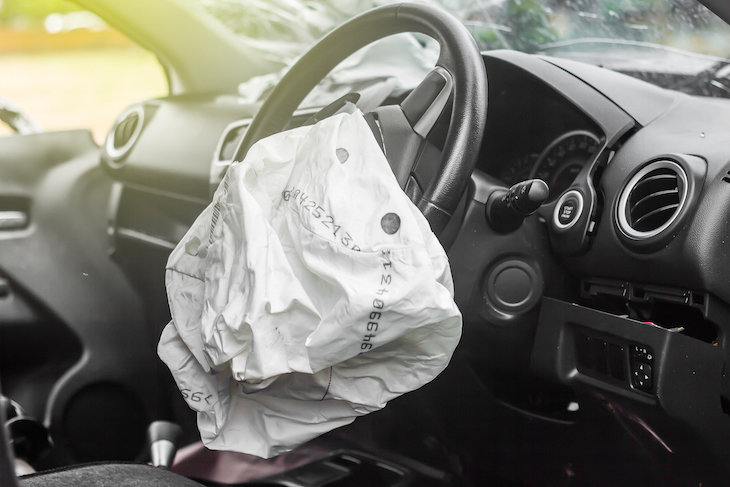How Do Car Airbags Work & When Should You Turn Them Off?

Car airbags are inflatable cushions found in multiple locations around the interior of a car. They’re standard safety features which, since they were first introduced in the 1950s, have saved countless lives across the world.
When Do Airbags Inflate?
If you’re involved in a collision, the airbags will inflate quickly and automatically. This will prevent you and your passengers from hitting any hard surfaces in your car, including the dashboard and the steering wheel. Meanwhile, your seatbelts will hold you in place, and the crumple zones will work to absorb as much of the collision impact as possible.
How Many Airbags Are in a Car?
The specific number of airbags in your car will depend on its make and model. Below are examples of airbags that you may find in your car:
Driver’s Airbags – One airbag will deploy from the steering wheel to prevent the driver’s head from striking the wheel in a collision. There may also be knee airbags under the steering column.
Passenger Airbags – Frontal airbags similar to the driver’s airbag: One will deploy from the dashboard, and another will deploy at knee height.
Far-Side Airbags – Also known as centre airbags, these will deploy between the front two seats in the car to prevent the driver from knocking heads with their passenger during a collision.
Side Airbags – As the name suggests, these deploy from the car doors should the airbag sensors detect a side-on collision. To further protect the driver’s and passengers’ heads, other airbags, known as curtain airbags, may deploy from the roof above the doors and windows.
In addition to the above, some cars contain seatbelt airbags for added torso protection.
How Do Car Airbags Work?
Each airbag in your car contains its own impact sensor. In the event of a collision, this will monitor both the direction and the severity of the impact. And if the impact’s severe enough, the sensor will send a signal to the airbag to deploy.
Inflation modules will then inflate any necessary airbags at an incredible speed – up to 160 mph in as little as 25 milliseconds.
After this rapid, almost instant inflation, the car airbags will then immediately deflate. This allows anyone involved in the accident to leave their car, while making it easier for emergency services to respond.
Why Do Airbags Burn?
Some people suffer minor burns from airbags. This is because, in order to inflate them so rapidly, airbag inflation modules generate a lot of heat. However, the protection it offers in a collision is often superior to a minor burn.
Can I Turn Off My Airbags?
You should only ever switch off your airbags if you need to protect a vulnerable passenger, such as a baby or a small child. Never place a rear-facing baby seat in your front passenger seat when the passenger airbag is activated. In the event of an accident, the force of the airbag could cause severe head injuries.
It’s always safest for babies and children to travel in the rear, until they’re big enough and old enough to travel in the front. And it’s vitally important that babies and children travel in a car seat that’s appropriate for their size and weight.
If you need to temporarily turn off your airbags, make sure you turn them on again once it’s safe to do so.
Can I Drive After My Airbags Have Gone Off?
If your airbags deploy, then you shouldn’t drive again until they’ve been reset by a professional. Not only will your car be lacking an essential safety feature, but any deflated airbags will also make it very difficult to drive.
In any case, if you’ve been involved in a collision that was severe enough to cause your airbags to deploy, then you shouldn’t drive again until your car’s been thoroughly checked by a garage.
And one more thing – if you have been involved in any form of collision, even if it was very mild, and even if it wasn’t your fault, make sure you tell your car insurance providers as soon as possible! Learn more about the importance of reporting incidents to your car insurers here.







